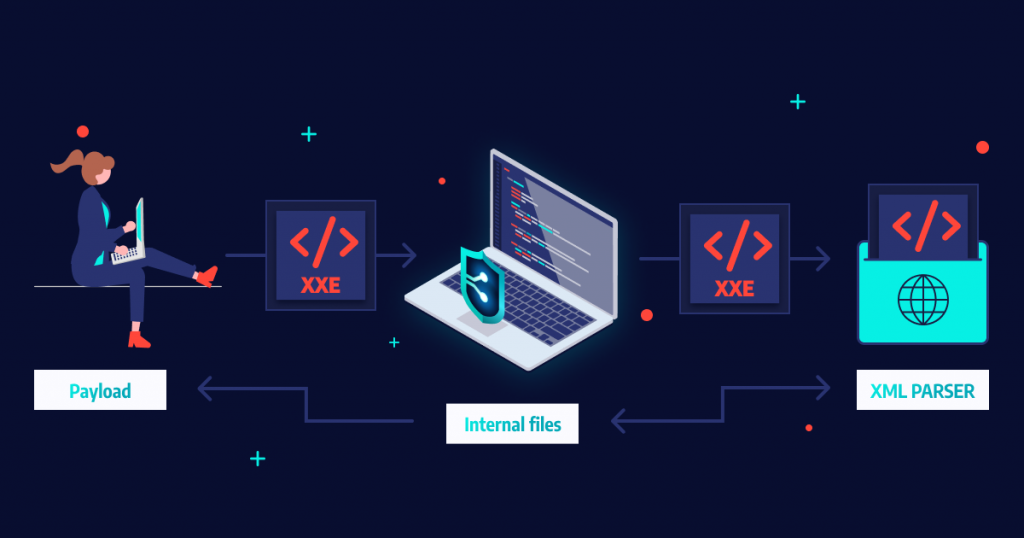
XML External Entity (XXE) attacks are a type of attack against web applications that process XML data. XXE attacks exploit vulnerabilities in XML parsers that allow attackers to inject external entities into XML documents. These external entities can then be used to access sensitive data, perform unauthorized actions, or cause denial-of-service attacks.
How XXE Attacks Work
XXE attacks work by exploiting the fact that XML parsers can be configured to load external entities. External entities are XML documents that are referenced from within another XML document. When an XML parser encounters an external entity reference, it will attempt to load the referenced document. If the referenced document is located on a malicious server, the attacker can use it to perform malicious actions.
For example, an attacker could inject an external entity reference that points to a file on the victim's server. When the XML parser attempts to load the referenced file, the attacker could steal sensitive data or gain unauthorized access to the victim's system.
Types of XXE Attacks
There are two main types of XXE attacks:
Blind XXE attacks: In a blind XXE attack, the attacker cannot see the results of their attack. This is because the application does not return the values of any defined external entities in its responses. However, the attacker can still exploit blind XXE attacks by using out-of-band techniques to find vulnerabilities and exploit them to exfiltrate data.
Open XXE attacks: In an open XXE attack, the attacker can see the results of their attack. This is because the application returns the values of any defined external entities in its responses. Open XXE attacks are more powerful than blind XXE attacks, but they are also easier to detect.
How to Prevent XXE Attacks
The best way to prevent XXE attacks is to disable external entity resolution in your XML parser. This can usually be done by setting a configuration option or by programmatically overriding the default behavior.
In addition to disabling external entity resolution, you should also take steps to validate all XML input before processing it. This will help to prevent attackers from injecting malicious code into your XML documents.
How to Detect XXE Attacks
There are a number of ways to detect XXE attacks. One way is to use a web application firewall (WAF) that is specifically designed to detect XXE attacks. WAFs can be configured to block malicious XXE requests before they reach your application.
Another way to detect XXE attacks is to use a static analysis tool. Static analysis tools can scan your code for potential XXE vulnerabilities.
Additional Resources
OWASP XXE Prevention Cheat Sheet: https://cheatsheetseries.owasp.org/cheatsheets/XML_External_Entity_Prevention_Cheat_Sheet.html
XML External Entity (XXE) Attacks: https://portswigger.net/web-security/xxe
How to Prevent XXE Attacks: https://www.imperva.com/learn/application-security/xxe-xml-external-entity/
Here are some additional details about XXE attacks:
XXE attacks can be used to steal sensitive data, such as passwords, credit card numbers, and other personal information.
XXE attacks can be used to perform unauthorized actions, such as accessing restricted files or making unauthorized changes to data.
XXE attacks can be used to cause denial-of-service attacks, by flooding the application with requests that contain malicious external entities.
Conclusion
XXE attacks are a serious security threat that can have a significant impact on your web applications. By following the steps outlined in this article, you can help to protect your applications from XXE attacks.
Here are some tips for preventing XXE attacks:
Disable external entity resolution in your XML parser.
Validate all XML input before processing it.
Use a web application firewall (WAF) that is specifically designed to detect XXE attacks.
Use a static analysis tool to scan your code for potential XXE vulnerabilities.
By following these tips, you can help to protect your web applications from XXE attacks.




